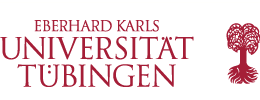[Uni Tübingen] - [Mat.-Nat. Fakultät] - [Fachbereich Chemie] - [Anorg. Chemie] - [Klaus Eichele] - [Software] - [WSolids1] - Spin-1/2--Spin-S

|
WSOLIDS1:
|
Description
This squeezed picture shows an example for the succesful simulation of a MAS spectrum of a spin-1/2 nucleus that is coupled to several quadrupolar nuclei in a powder sample. It is the 13C MAS NMR spectrum of (NH4)SeCN, where carbon is coupled to a N-14 nucleus, and the results have been published in:
G. M. Bernard, K. Eichele, G. Wu, C. Kirby, R. E. Wasylishen:
Nuclear Magnetic Shielding Tensors for the Carbon, Nitrogen and Selenium Nuclei of
Selenocyanates—A Combined Experimental and Theoretical Approach.
Can. J. Chem. 2000, 78, 614-625.
Click on the picture to have a better look.
Background
The quadrupolar interaction at a quadrupolar nucleus causes its axis of quantization to be tilted away from the direction of the external magnetic field. This also modifies the spatial dependence of the dipolar interaction, so that magic-angle spinning is not able to suppress the heteronuclear dipolar coupling in the spectrum of the spin-1/2 nucleus, resulting in splittings and broadenings. Similar effects can be transmitted through the indirect spin-spin coupling. If the nuclear quadrupolar coupling constant is on the same order of magnitude as the Larmor frequency of the quadrupolar nucleus, the combined Zeeman-quadrupolar Hamiltonian must be diagonalized at each orientation and averaged over a rotor period to calculate a theoretical spectrum. However, if the quadrupolar coupling is relatively small, this so-called breakdown of the high-field approximation causes lineshapes that can be simulated using first-order perturbation theory. If the broadening is small, such lineshapes can also be analyzed using a "stick" approach.
[ Anorg. Chemie ] | [ Go Home ] | webm@ster | last modified: 26.06.2015


